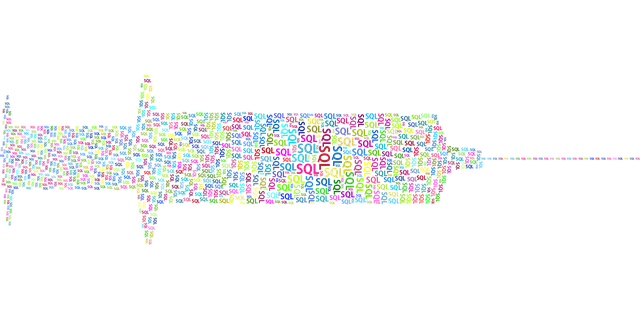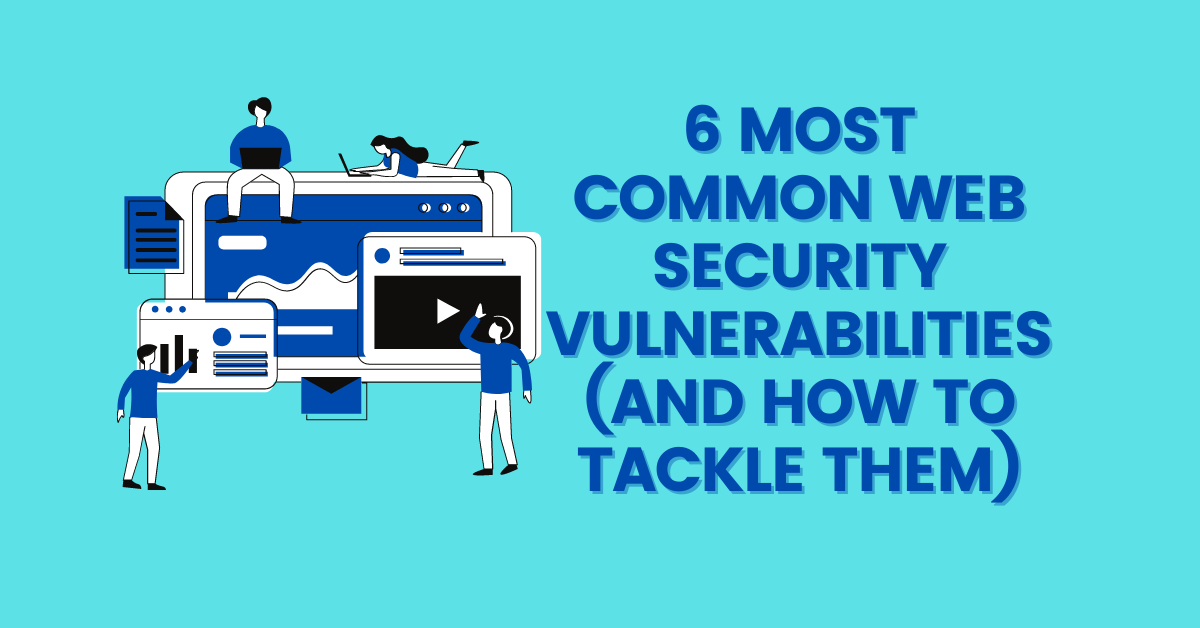This post will show you the most common web security vulnerabilities and how to fix them.
As a business, your website is your online headquarters. A security breach on your website equals someone breaking into your office and stealing your business records and customer information. This is risky as the thief could do anything with this data to implicate you and your customers.
That’s not something you’ll want to happen to your website. In fact, we prepared a web security guide just for you to learn more about protecting your website.
So, here are the most common web security vulnerabilities and how to tackle them.
Table of Contents
Most Common Web Security Vulnerabilities
1. SQL Injection

SQL Injection is a web attack that involves malicious SQL statements. With a successful SQL attack, a hacker can access your website’s SQL database to copy, add, edit, or delete data it contains. SQL injection is the most common web security vulnerability as most websites use an SQL database.
You can tackle SQL injection by being wary of user input. After finding vulnerable inputs within your websites, Hackers send the SQL codes as a standard user input. Hence, it’s ideal not to trust any user input. Ensure that all user inputs are validated before allowing them on your website.
2. Broken Authentication
Broken authentication has to do with various web vulnerabilities. However, they all involve bypassing authentication methods featured on websites.
Most broken authentication attacks involve credential stuffing, improper session timeout, and passwords not salted & hashed. These allow attackers to bypass authentication and impersonate legitimate users.
Multi-factor authentication is one of the best ways to tackle broken authentication attacks. That way, knowing a user’s credentials – user name and password – won’t be enough to gain access to their account.
Furthermore, user passwords stored in your database should be encrypted, salted, and hashed.
3. Cross-Site Scripting

Also known as XSS attacks, this web vulnerability has to do with client-side code injection. Typically, the attack inputs malicious codes on a web page, which are executed once the web page is visited. It is an input vulnerability and happens mostly to websites that allow user comments.
Just like SQL injection, XSS can be tackled by monitoring user input. Each user input should be filtered and only safe and valid input should be allowed.
Also, you can encode data on output and make use of a Content Security Policy (CSP). The policy can help reduce the damages any XSS attack could cause.
4. Security Misconfiguration
As a website owner, you fail to establish all the necessary security protocols and controls for your web server, making it vulnerable to web attacks.
That’s what security misconfiguration is. Also, you could implement these security controls with one or two errors that still make it vulnerable.
Security misconfiguration is relatively easy to handle. You must understand how your website works, pick the best security measures, and ensure that everything is implemented carefully.
Use strong admin passwords and block unauthorized access to your server. Occasionally run scans to detect and fix any security lapses.
5. Insecure Direct Object References(IDOR)
It’ll be hard for an attacker to find an insecure direct object reference (IDOR) on your website. However, if they do, they can easily exploit it, and the consequences can be grave.
This vulnerability simply involves unauthorized access using unvalidated user input. Hackers can reference objects in your web server directly.
The first thing you can do to tackle IDOR is to detect them, which is very technical. You need to do this first before any hacker finds it. Then, you can replace object references using secure hashes or using indirect object references.
Next, ensure proper session management and always check object-level user access controls.
6. Cross-site Request Forgery
When a user visits a website, the browser automatically sends authentication tokens for every request.
An attacker can use a malicious web page to alter the interactions between the user's browser and the visited website. This allows them to access the user’s previous authentication cookies for the visited website.
Session authentication can help you tackle cross-site request forgery. This can be achieved by issuing tokens for every active user session to verify that the real user sends requests to the website. This is known as token-based mitigation, and you can use state or stateless token patterns.
Most Common Web Security Vulnerabilities: Frequently Asked Questions
The internet is a vast landscape, and with great opportunity comes great responsibility, especially regarding web security. Here's a breakdown to shed light on frequently asked questions:
What is the most common web security vulnerability?
There's no single “most common” vulnerability, but some appear consistently on security expert lists. Here are two leading contenders:
Injection Flaws: These vulnerabilities occur when attackers can inject malicious code into a website's inputs, like login forms or search bars. This code can trick the website into executing unintended actions, potentially stealing data or compromising the entire system.
Broken Authentication and Session Management: Weak login credentials, predictable session IDs, or a lack of multi-factor authentication can make websites vulnerable to unauthorized access. Attackers can exploit these weaknesses to access user accounts or even administrative privileges.
What are the 4 main types of vulnerability in cyber security?
Web security vulnerabilities fall under the broader umbrella of cybersecurity vulnerabilities. Here are four widespread categories:
- Injection Flaws: As mentioned earlier, attackers can exploit weaknesses in how a website handles user input.
- Broken Authentication: Inadequate login procedures or session management can grant unauthorized access.
- Cross-Site Scripting (XSS): Attackers can inject malicious scripts into a website to steal user data or redirect them to phishing sites.
- Insecure Direct Object References: Websites with weak access controls might allow attackers to access or modify data they shouldn't have permission for.
What are the top web security threats?
The top web security threats are often a result of the vulnerabilities mentioned above. These threats can include:
- Data Breaches: Due to vulnerabilities, attackers can steal sensitive information like user credentials, financial data, or personal details.
- Malware Distribution: Compromised websites can be used to spread malware to unsuspecting visitors.
- Denial-of-Service (DoS) Attacks: Attackers can overwhelm a website with traffic, making it unavailable to legitimate users.
- Phishing Attacks: Deceptive websites or emails can trick users into revealing sensitive information.
What are the three common website vulnerabilities?
While the specific number might vary depending on the source, here are three frequently encountered vulnerabilities:
- Injection Flaws: This vulnerability's prevalence makes it a top contender.
- Broken Authentication: Weak login security is a constant battleground for web security.
- XSS (Cross-Site Scripting): The attacker's ability to inject malicious scripts poses a significant threat.
By understanding these common vulnerabilities and threats, website owners and developers can take steps to improve their security posture and protect user data.
What is a web security vulnerability?
A web security vulnerability is a weakness or misconfiguration in a website or web application that attackers can exploit to gain unauthorized access, steal data, or disrupt operations. Imagine a website as a castle. A vulnerability is like a weak spot in the wall, a hidden passage, or a faulty gate that attackers could use to breach your defences.
What are the most common attacks on web applications?
Here are some of the most frequent web application attacks that exploit vulnerabilities:
- SQL Injection: Hackers trick the website's database into revealing or taking control of sensitive information.
- Cross-Site Scripting (XSS): Attackers inject malicious code into the website that runs in the visitor's browser, potentially stealing their data or redirecting them to harmful sites.
- Insecure Direct Object References (IDOR): Attackers access data they shouldn't be able to by manipulating website addresses.
- Broken Authentication: Weak login procedures or stolen credentials allow unauthorized users to access your system.
- Denial-of-Service (DoS): Attackers flood the website with traffic, making it unavailable to legitimate users.
What is a vulnerability in web application security?
In web application security, a vulnerability is any flaw or oversight that creates a potential entry point for attackers. It can be a coding error, a misconfigured server setting, or even a lack of proper user access controls.
What is Owasp vulnerability?
OWASP (Open Web Application Security Project) is a non-profit organization that creates resources and best practices for web application security. They publish a list of the “OWASP Top 10,” ranking the most critical web application security vulnerabilities. Addressing these vulnerabilities can significantly improve your website's security posture.
Bottom Line
Web security is broad, as you have to tackle many possible vulnerabilities. Nevertheless, you can focus on the important ones which are the most common.
If your web security is breached, you could suffer severe data loss and give away user private data, harming your brand’s image.
You can safeguard your websites by tackling the most common web security vulnerabilities discussed in this post.
INTERESTING POSTS
About the Author:
Chandra Palan is an Indian-born content writer, currently based in Australia with her husband and two kids. She is a passionate writer and has been writing for the past decade, covering topics ranging from technology, cybersecurity, data privacy and more. She currently works as a content writer for SecureBlitz.com, covering the latest cyber threats and trends. With her in-depth knowledge of the industry, she strives to deliver accurate and helpful advice to her readers.
Meet Angela Daniel, an esteemed cybersecurity expert and the Associate Editor at SecureBlitz. With a profound understanding of the digital security landscape, Angela is dedicated to sharing her wealth of knowledge with readers. Her insightful articles delve into the intricacies of cybersecurity, offering a beacon of understanding in the ever-evolving realm of online safety.
Angela's expertise is grounded in a passion for staying at the forefront of emerging threats and protective measures. Her commitment to empowering individuals and organizations with the tools and insights to safeguard their digital presence is unwavering.







This is a good list! It’s always good to be safe!